Quince Plant
- January 9, 2024
- 0 comment
The Quince plant, scientifically known as Cydonia oblonga, is a fascinating addition to the world of horticulture. With a rich history dating back to ancient civilizations, this deciduous shrub or small tree has transcended its botanical origins to become a cherished component of gardens worldwide. Renowned for its distinctive pear-shaped fruits, the Common Quince variety is a culinary delight, transforming from firm and astringent to a flavorful delicacy when cooked. In contrast, the Flowering Quince, belonging to the Chaenomeles genus, captivates with its ornamental value, boasting vibrant flowers in shades of red, pink, and white.
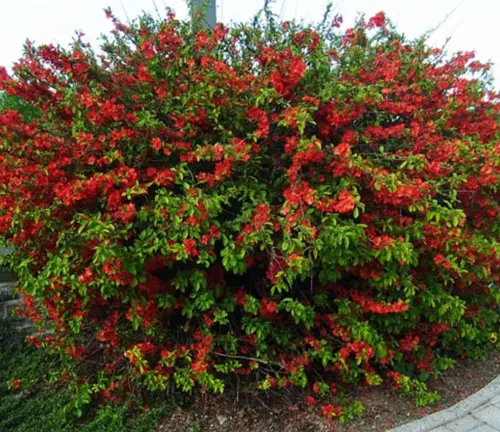
Growing Quince plants requires attention to soil quality, sunlight, and watering, with pruning and pest control playing crucial roles in their care. Beyond the practical aspects, Quince plants hold a dual role in both culinary and medicinal realms. The fruits find their way into a variety of recipes, from jams to pastes, while their nutritional richness contributes to traditional medicinal uses. Steeped in cultural symbolism and folklore, the Quince plant has been associated with love, fertility, and good fortune across various traditions. Whether gracing gardens for their aesthetic appeal or playing a role in biodiversity through their ecological interactions, Quince plants stand as a testament to the interconnectedness of nature and human culture.
| Aspect | Description |
|---|---|
| Scientific Name | Cydonia oblonga |
| Plant Type | Deciduous shrub or small tree |
| Varieties | Common Quince (Cydonia oblonga), Flowering Quince (Chaenomeles), Chinese Quince (Pseudocydonia sinensis), Japanese Quince (Chaenomeles japonica), and more |
| Height | Varies by species and cultivar, typically ranging from 6 to 15 feet |
| Fruit Shape | Commonly pear-shaped |
| Culinary Uses | Common Quince is used in cooking and baking, transforming from astringent to flavorful when cooked. Flowering Quince varieties are primarily ornamental but may produce small, astringent fruits. |
| Growing Conditions | Well-drained soil, slightly acidic to neutral pH, full sunlight, and regular watering |
| Pruning Needs | Regular pruning is essential for shaping, air circulation, and disease prevention |
| Pest Susceptibility | May attract aphids and caterpillars; vigilant monitoring and organic pest control recommended |
| Flowering Period | Varies by species, typically in spring; Flowering Quince varieties are known for vibrant blossoms in shades of red, pink, and white |
| Cultural Symbolism | Associated with love, fertility, and good fortune in various traditions |
| Medicinal Properties | Rich in vitamins and antioxidants; used in traditional medicine for various purposes |
| Winter Protection | Generally hardy, but in extremely cold climates, providing winter protection, such as mulching, can be beneficial |
| Harvest Time | Quince fruits are ready to harvest when they turn golden-yellow, usually 3 to 5 months after flowering |
| Global Presence | Found in regions from the Mediterranean to Asia; adaptable to diverse climates |
| Ornamental Value | Flowering Quince varieties add aesthetic appeal to gardens with their colorful blooms; Common Quince is appreciated for its foliage and overall form |
| Biodiversity Contribution | Flowers attract pollinators, supporting ecosystems; fallen fruits provide nourishment for wildlife, showcasing the interconnectedness of nature |
Unveiling Nature’s Hidden Gem
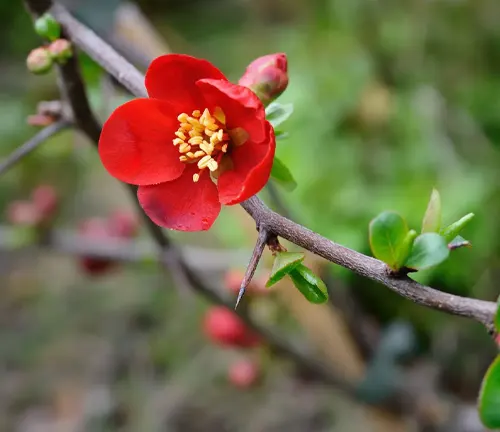
In the realm of horticulture, one plant stands out for its versatility, rich history, and myriad uses—the Quince plant. From its humble beginnings in ancient civilizations to its contemporary presence in gardens worldwide, the Quince plant holds a unique allure for both enthusiasts and casual gardeners. Let’s delve into the fascinating world of the Quince plant, exploring its types, cultivation, benefits, cultural significance, and much more.
The Quince plant, scientifically known as Cydonia oblonga, is a fruit-bearing deciduous shrub or small tree. Its roots can be traced back to the Mediterranean region, where it has been cultivated for centuries. Beyond its botanical significance, the Quince plant holds a special place in various cultures and traditions, making it a captivating subject for exploration.
Growing Quince Plants
Successfully cultivating Quince plants begins with understanding their basic requirements. These plants thrive in well-drained soil and require ample sunlight. Adequate watering, especially during dry spells, is crucial for optimal growth.
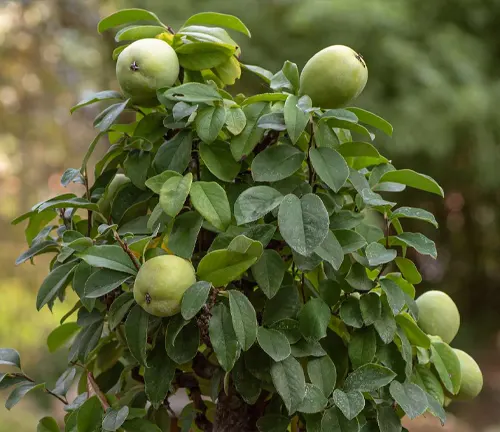
Quince Plant Care
To ensure the health and longevity of Quince plants, regular pruning is essential. This not only helps maintain the desired shape but also promotes air circulation, reducing the risk of diseases. Additionally, implementing effective pest control measures safeguards the plant from potential threats.
Benefits of Quince Plants

Culinary Uses
Quince fruits, though firm and astringent when raw, transform into a delectable delicacy when cooked. From jams and jellies to pies and sauces, the culinary possibilities are endless.
Medicinal Properties
Beyond the kitchen, Quince plants boast medicinal properties. Rich in vitamins and antioxidants, they contribute to overall well-being and have been used in traditional medicine for various purposes.
Quince Plant in Folklore
Cultural Symbolism
In many cultures, the Quince plant symbolizes love, fertility, and good fortune. It often plays a significant role in weddings and other celebrations, adding a touch of symbolism to joyous occasions.
Traditional Beliefs
Throughout history, the Quince plant has been associated with various superstitions and beliefs. From warding off evil spirits to promoting prosperity, its mystical qualities have left an indelible mark on folklore.
Quince Plant in Gardens
The allure of Quince plants extends beyond practical uses. Their ornamental features make them a prized addition to gardens, enhancing the aesthetic appeal with vibrant blooms and lush foliage. Landscapers often incorporate Quince plants to create visually stunning outdoor spaces.

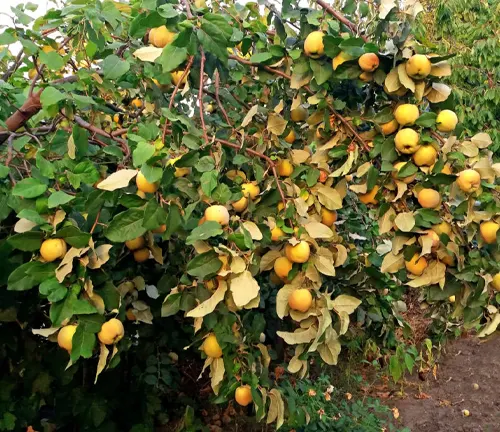
Challenges in Quince Plant Cultivation
Despite their resilience, Quince plants are not without challenges. Diseases such as fire blight and fungal infections can pose threats, requiring vigilant care. Environmental factors, including extreme temperatures, also influence their well-being.
Quince Plant Varieties
The world of Quince plants is diverse, with various cultivars offering unique characteristics. Some varieties are prized for their size, while others boast exceptional flavor profiles. Exploring these options allows enthusiasts to tailor their choices to specific preferences.
Harvesting Quince Fruits
Timing is crucial when it comes to harvesting Quince fruits. Waiting until they achieve a golden-yellow hue ensures peak ripeness. The ripening process, often requiring patience, results in fruits that are not only flavorful but also packed with nutritional benefits.
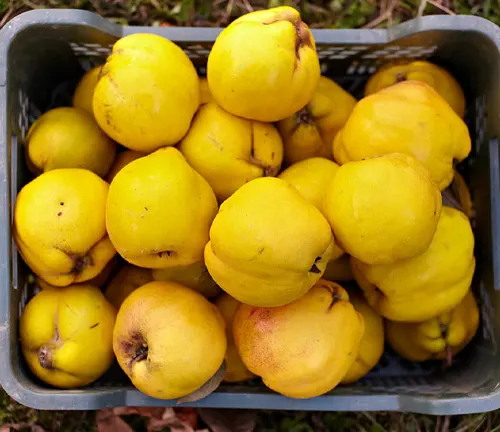
Recipes Using Quince
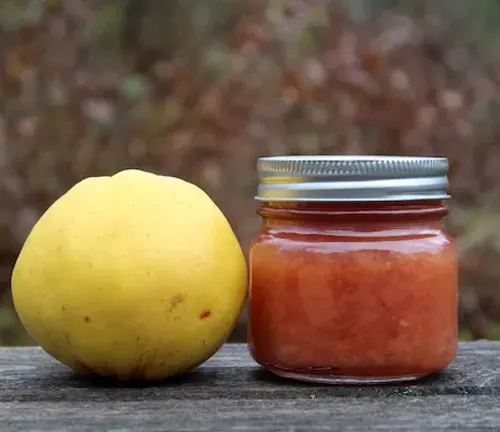
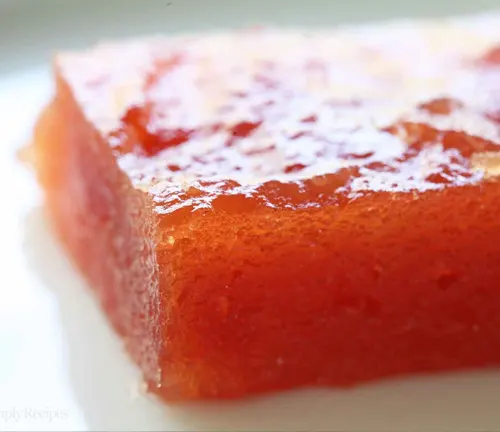
Quince Jam
A classic among Quince recipes, the jam is a delightful spread that captures the essence of the fruit’s natural sweetness. Paired with toast or used as a topping, Quince jam is a culinary delight.
Quince Paste
With its dense, jelly-like consistency, Quince paste is a versatile accompaniment to cheese boards. Its sweet and slightly tangy flavor complements a variety of cheeses, making it a favorite among food enthusiasts.
Quince Plant in Art and Literature
The Quince plant’s aesthetic appeal has not gone unnoticed in the realms of art and literature. Paintings throughout history depict its graceful form and vibrant fruits. Likewise, poets and writers have often drawn inspiration from the Quince plant, incorporating its symbolism into their works.
Global Presence of Quince Plants
From the Mediterranean to Asia and beyond, Quince plants have found homes in diverse climates. Their adaptability and resilience contribute to their global presence, making them a cherished component of gardens worldwide.
Quince Plant and Biodiversity
Beyond their role in human culture, Quince plants play a vital role in biodiversity. Their flowers attract pollinators, supporting ecosystems. Additionally, fallen fruits provide nourishment for wildlife, showcasing the interconnectedness of nature.
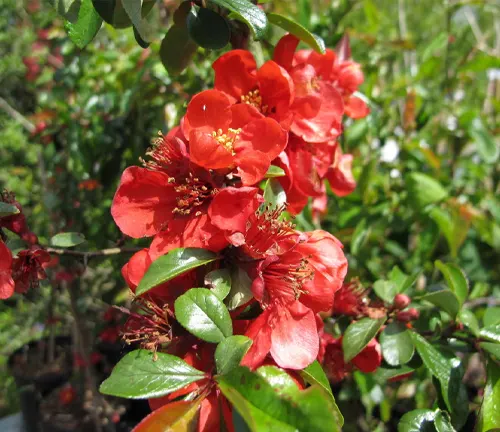
Different Species
Common Quince
(Cydonia oblonga)
This is the most well-known and widely cultivated species, prized for its pear-shaped fruits that are used in cooking and baking.
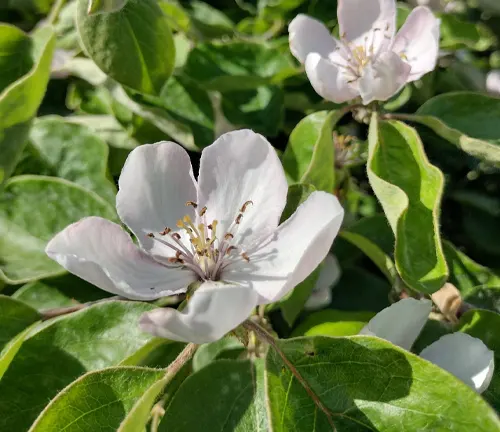
Flowering Quince
(Chaenomeles)
Unlike the Common Quince, Flowering Quince is primarily grown for its ornamental value, featuring vibrant flowers in shades of red, pink, and white.

Chinese Quince
(Pseudocydonia sinensis)
Native to China, this species is known for its large fruits and is also valued for its ornamental qualities.
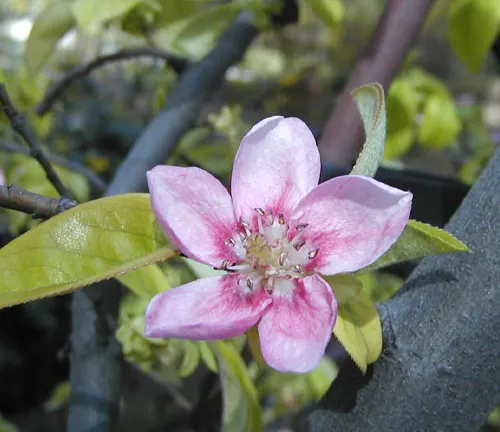
Japanese Quince
(Chaenomeles japonica)
Similar to Flowering Quince, the Japanese Quince is cultivated for its beautiful blossoms and is often used in landscaping.
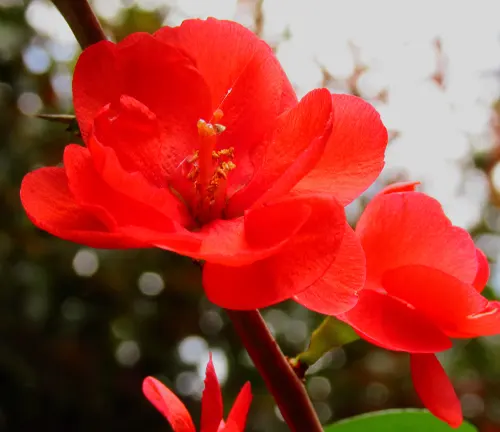
Smyrna Quince
(Chaenomeles speciosa)
Another species within the Chaenomeles genus, Smyrna Quince is appreciated for its showy flowers and is sometimes used in traditional medicine.
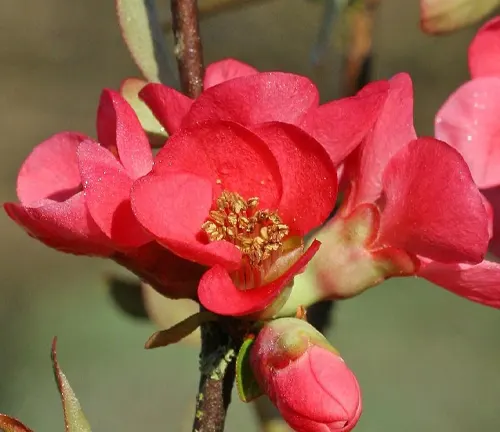
Azerbaijan Quince
(Cydonia iberica)
Found in the wild in parts of Eastern Europe and Western Asia, this species is related to the Common Quince and has similar culinary uses.
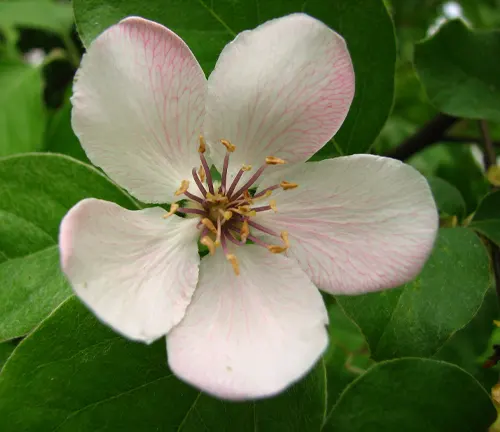
European Wild Quince
(Cydonia oblonga var. pontica)
This variety is native to the Caucasus region and is considered a wild form of the Common Quince.

Sargent’s Quince
(Chaenomeles speciosa ‘Sargentii’)
A cultivar of the Japanese Quince, Sargent’s Quince is popular for its low-growing, spreading habit and profuse flowering.
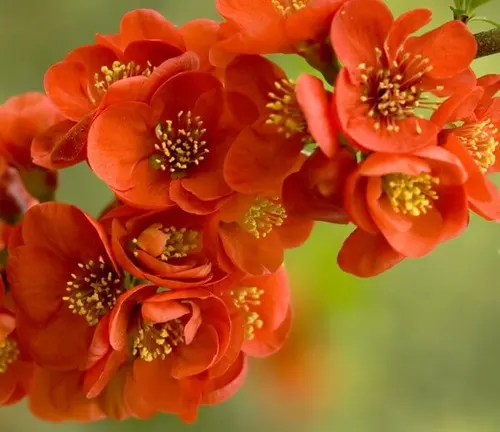
Toyo Nishiki Flowering Quince
(Chaenomeles speciosa ‘Toyo Nishiki’)
This cultivar is known for its multi-colored flowers, with shades of pink, red, and white appearing on the same plant.

Smyrna Quince
(Chaenomeles speciosa ‘Smyrna’)
A specific cultivar within the Smyrna Quince species, valued for its ornamental features and potential medicinal uses.
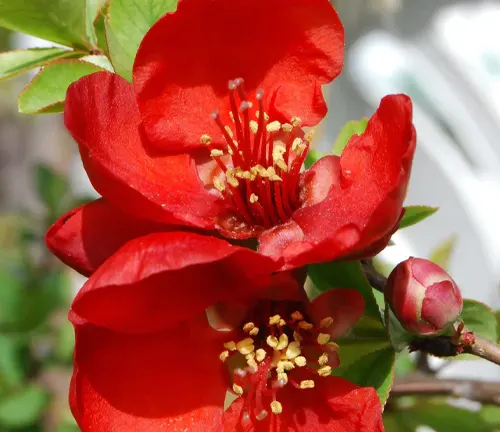
Frequently Asked Questions (FAQs)
- What are the ideal growing conditions for Quince plants?
Quince plants thrive in well-drained soil with a slightly acidic to neutral pH. They require full sunlight and regular watering. - How tall do Quince plants typically grow?
The height of Quince plants can vary depending on the species and cultivar. On average, they may range from 6 to 15 feet. - Do Quince plants attract pollinators?
Yes, Quince plants produce flowers that attract pollinators such as bees and butterflies, contributing to garden biodiversity. - Can I grow Quince plants from seeds?
While possible, it’s more common to propagate Quince plants through cuttings or by grafting to maintain specific characteristics of a desired cultivar. - Are Quince plants self-pollinating?
Some varieties of Quince plants are self-pollinating, but having multiple plants can enhance fruit production. - When is the best time to plant Quince trees?
The recommended time for planting Quince trees is during the dormant season, typically in late winter or early spring. - How often should I fertilize Quince plants?
Fertilize Quince plants in the early spring with a balanced fertilizer. Avoid excessive nitrogen, as it can promote excessive vegetative growth. - What are common diseases affecting Quince plants?
Quince plants may be susceptible to diseases like fire blight, fungal infections, and leaf spot. Regular monitoring and appropriate care can help prevent these issues. - Can I grow Quince plants in containers on a balcony or patio?
Yes, certain dwarf varieties of Quince plants are well-suited for container gardening in smaller spaces. - How long does it take for Quince plants to start producing fruit?
Quince plants typically start producing fruit 3 to 5 years after planting, with the exact timing depending on the specific cultivar and growing conditions. - Are there any specific pruning techniques for Quince plants?
Pruning Quince plants involves removing dead or diseased branches, shaping the plant, and encouraging air circulation. It’s best done during the dormant season. - Can Quince fruits be eaten raw?
While Quince fruits are firm and astringent when raw, some varieties become palatable when fully ripe. However, they are often used in cooking or processing for their unique flavor. - Do Quince plants require winter protection?
Quince plants are generally hardy, but in extremely cold climates, providing some winter protection, such as mulching around the base, can be beneficial. - How do I know when Quince fruits are ready to harvest?
Quince fruits are ready to harvest when they turn a golden-yellow color. They should be firm and fragrant, indicating optimal ripeness. - Can Quince plants be grown in pots indoors?
While Quince plants are primarily outdoor plants, certain dwarf varieties may be suitable for growing in large pots indoors, provided they receive adequate sunlight.


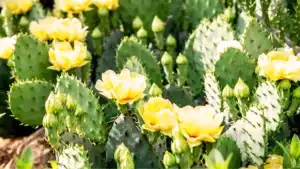
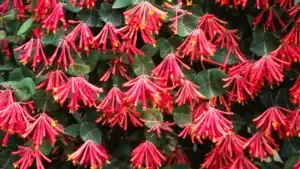


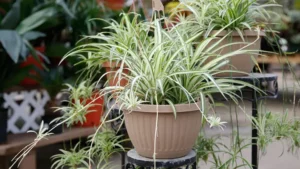
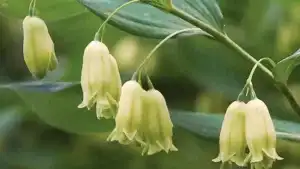



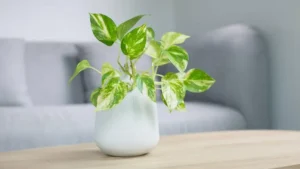


Leave your comment